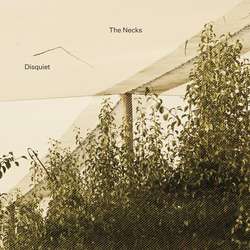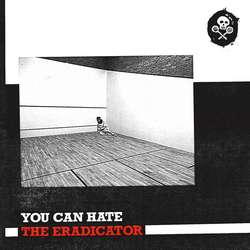Bradford Cox is in many ways like a ghost. There’s his whispery vocal style, like that of a specter, haunting and evanescent. And the glaring image of himself on the cover of his side project, Atlas Sound’s, second release, Logos. Or for instance his entire musical catalogue; a seamless spawn of translucent albums that are distinct, yet share vivid familiarity. And to think they’re held under the two different monikers.
Although, on his most recent Atlas Sound release, Parallax, there seems to be input from both projects, the other being his full-time noise-rock outfit, Deerhunter. Where there are certain aural creations that are signature to his ambient tendencies with Atlas Sound, many of these songs seem structured according to the more popular Deerhunter formulas. The result is a compelling collection and, for Bradford Cox, an exhaustive scrapbook of songs. As stated, Atlas Sound is his palette for ideas that he finds incompatible for Deerhunter. Parallax displays increased form compared to the cluttered nature of his prior solo work.
There’s a sort of bipolar arrangement of tracks on Parallax, each one reflecting either one of two emotions: marveled mania or melancholy. This is the sort of trick that Cox has successfully utilized in most of his music; the ability to layer drenched emotions beneath bright, bubbly textures. His soundscapes, though buoyant and transparent, are often displaced by dark chord progressions or despairing croons.
That’s not to say each tune tucks away some somber sing-along. Songs like “Te Amo”, “Mona Lisa”, and album closer “Light Works” display the sort of sun-soaked psych-pop that Cox revels in Deerhunter works. Making up several of the record’s best tracks, they effectually remove listeners from the pensive state formerly brought on by gloomier tracks.
Amidst the smiles encouraged by these merry melodies, it’s really the wistful nature of the more sobering tracks that fortify deeper emotional investment. Opener “The Shakes” and the ensuing “Amplifiers” best represent the sound that is Atlas Sound. It’s perhaps best described as that happy-sad feeling existing in pure nostalgia. Cox succeeds in sonically defining these feelings of reminiscence and loneliness.
Like the transference of seasons, Parallax moves through drifty, autumnal vibes reaching closure somewhere at the onset of winter. Latter tracks “Terra Incognita” and “Flagstaff” nod to the desolate silence of such cold months. Whether its early November release date was intentional or mere coincidence, the album feels best suited for the approaching year’s end. And despite a temporal annual arrival, Parallax makes out to be a highlight record of 2011.




